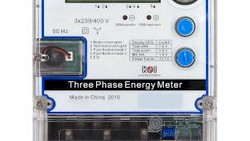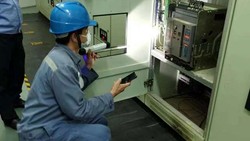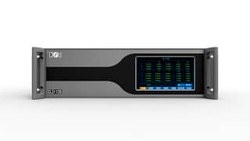On-shore wind power generation has emerged as a prominent renewable energy source, contributing to the global transition towards cleaner and more sustainable energy. In this article, we will explore the advantages of on-shore wind power, while also addressing potential drawbacks. By providing an objective analysis, we aim to offer you a comprehensive understanding of this renewable energy option.
Advantages of On-Shore Wind Power
On-shore wind power offers numerous benefits, including increased renewable energy generation, job creation, and reduced greenhouse gas emissions.
Scalability and Cost-Effectiveness
On-shore wind farms offer a distinct advantage in terms of scalability and cost-effectiveness, making them a viable solution to meet varying energy demands in a sustainable manner. The ability to scale up wind farms to match the energy needs of different regions or communities is a key strength of this renewable energy source.
As advancements in technology continue to drive innovation, on-shore wind power has become increasingly cost-effective when compared to traditional energy sources. The efficiency of wind turbines has improved significantly over the years, leading to higher energy generation and lower production costs. Additionally, the scale of manufacturing and deployment has increased, resulting in economies of scale that further contribute to cost reductions.
The scalability of on-shore wind farms allows for flexibility in meeting energy demands. Depending on the specific requirements of an area, the number of wind turbines can be adjusted to generate the desired amount of electricity. This makes on-shore wind power suitable for a range of applications, from powering small communities to supporting larger urban centers.
Furthermore, the cost-effectiveness of on-shore wind power extends beyond the initial investment. With no fuel costs and minimal operational expenses, the ongoing maintenance and operation of wind farms are relatively economical. This cost stability, coupled with the ability to harness a free and abundant resource, positions on-shore wind power as a long-term, sustainable solution.
Local Economic Development
On-shore wind farms not only provide clean energy but also have the potential to stimulate local economies in various ways. One significant aspect is job creation. The establishment and operation of wind farms require a skilled workforce, ranging from engineers and technicians to project managers and maintenance personnel. These job opportunities contribute to the growth of the local workforce and can have a positive impact on employment rates.
Moreover, wind farms attract investment opportunities. The development of these projects often involves collaboration with local stakeholders, including landowners, construction companies, and suppliers. This collaboration creates a ripple effect, generating investments in the region and fostering economic growth.
In addition to job creation and investment opportunities, the establishment of wind farms can lead to the establishment of manufacturing and maintenance facilities. These facilities cater to the demand for wind turbine components, such as blades, towers, and control systems. By encouraging the growth of local manufacturing and maintenance sectors, communities can benefit from a more diverse and resilient economy.
Furthermore, when combined with energy storage and distributed energy solutions, wind farms can contribute even more to local economic development. Energy storage systems allow for the efficient capture and utilization of excess energy generated by wind farms during periods of low demand. This stored energy can be utilized during peak demand periods or when renewable energy generation is low, ensuring a stable and reliable power supply. Distributed energy solutions, such as microgrids, enable communities to become more self-sufficient in their energy needs, reducing dependence on external sources and enhancing energy security.
At CLOU, we offer a comprehensive range of energy storage and distributed energy solutions that seamlessly integrate with on-shore wind power generation. Our advanced technologies and expertise empower communities to maximize the economic benefits of wind farms while ensuring a reliable and sustainable energy supply.

(credit CLOU)
Potential Drawbacks of On-Shore Wind Power
While on-shore wind power offers numerous benefits, it's important to acknowledge and address certain drawbacks associated with its implementation.
Visual Impact
The visual presence of wind turbines can be a concern for some communities, impacting landscapes and scenic views. Proper planning and location selection, guided by government regulations, can help mitigate the visual impact. Considerations such as turbine placement, distance from residential areas, and involvement of local communities in decision-making processes can help find suitable compromises.
Noise
Wind turbines can generate noise during operation, which may cause disturbances for nearby residents. However, advancements in turbine design and technology have significantly reduced noise levels over the years. Proper site selection, setback distances, and the use of noise-reducing measures can further minimize the impact of noise on surrounding communities.
Stroboscope Effect
Wind turbine blades can create a stroboscope effect, also known as shadow flicker, as they rotate in front of the sun. This can cause discomfort or annoyance for nearby residents. Blade angle adjustment systems and setback distances can help mitigate the occurrence and intensity of the stroboscope effect, ensuring the well-being of surrounding communities.
Wildlife
The presence of wind turbines can potentially pose risks to birds and bats. However, studies have shown that with proper planning and placement, the impact on wildlife can be minimized. Environmental impact assessments, in conjunction with expert advice, help identify sensitive habitats and migration routes, thereby guiding the siting of wind farms to reduce wildlife disturbances.
Recycling
The recycling of wind turbine blades remains a challenge due to the complex composition of composite materials, such as fiberglass. Currently, there is no widely adopted and economically viable solution for their recycling. Ongoing research and innovation are necessary to find sustainable methods for the recycling or repurposing of wind turbine blades, minimizing their long-term environmental impact.
Addressing these drawbacks requires a collaborative effort between industry stakeholders, local communities, and government bodies. By implementing appropriate regulations, conducting thorough assessments, and fostering innovation, we can overcome these challenges and ensure the sustainable integration of on-shore wind power.
Takeaway
On-shore wind power generation offers numerous advantages, including carbon emission reduction, scalability, and local economic development. However, it's important to acknowledge potential drawbacks such as visual impacts, noise concerns, and effects on wildlife. By addressing these concerns through careful planning and mitigation measures, we can maximize the benefits of on-shore wind power while minimizing its potential drawbacks.
At CLOU, we recognize the crucial role of accurate measurement and monitoring in the successful integration of on-shore wind power, distributed energy resources, and energy storage solutions. Our comprehensive range of electronic energy meters and advanced software solutions are specifically designed to meet the evolving needs of the energy industry. With our expertise in metering and software, we empower energy providers and operators to effectively manage distributed energy resources, including on-shore wind power, and optimize energy storage.
Our solutions enable precise measurement of power generation, seamless integration into the grid, efficient energy management, and the implementation of energy storage technologies. By utilizing our products, energy providers can ensure accurate billing, gain valuable insights, and contribute to a more sustainable future.
If you have any inquiries or need further information about our range of products, please do not hesitate to reach out to us. We are here to assist you and welcome your valuable thoughts and comments.
Editor's note: This article was originally published in October 2023 and has been updated for comprehensiveness.





All comments are moderated before being published. Inappropriate or off-topic comments may not be approved.